When Kim Jong-un does things, he goes gangbusters.
For the first seven years of his rule, from December 2011 to December 2018, Kim has gone full force on his version of “maximum pressure.” He has tested nearly 90 ballistic missiles (three times more than that of his father and grandfather combined) and conducted four of North Korea’s six nuclear tests, including the biggest one in September 2017, which had an estimated yield of 150 kilotons.
At the same time, he refused U.S., South Korean, and Chinese attempts to engage, refusing to meet with any foreign head of state. Until 2018, of course.
As it turns out, Kim’s not just good at maximum pressure, he’s also pretty good at maximum engagement.
Just a few months ago, the world braced for a possible war on the Korean Peninsula. But now Seoul and Pyongyang are reportedly planning to announce an official end to the Korean War as they enter the final days of planning for a summit between Kim Jong-un and South Korean President Moon Jae-in. (An armistice ended the military conflict that lasted from 1950-1953, but the two Koreas are technically still at war.)
How did we go from belligerence to bear hugs?
Kim’s New Year’s speech, in which he expressed his willingness to improve inter-Korean ties, kicked off what has blossomed into a veritable “Summit Spring.” He dispatched his sister and North Korean athletes to the Olympics in Pyeongchang, South Korea. Kim told a delegation of South Korean envoys that he would consider denuclearization and that he wants summits with Presidents Moon and Trump. In his first known trip outside of the country since he became leader of North Korea, Kim met with Chinese President Xi and subsequently hosted Chinese and South Korean artists and musicians to North Korea. There is talk of a potential Kim-Putin meeting, though Japan’s Prime Minister Shinzo Abe stands on the sidelines. Kim has also reportedly met with the director of the Central Intelligence Agency (and currently secretary of state-designate) Mike Pompeo, who traveled to Pyongyang in April.
If all goes as planned, Kim would be squeezing in a couple of years’ worth of summits—with regional and international leaders, including the U.S. president—into the first six months of 2018, without having had to make any concessions on the nuclear weapons program, his country’s appalling human rights situation, or its probably ongoing cyberattack operations. As with the weapons program, Kim’s approach to engagement seems to be: Go bigger and bolder.
Kim’s approach to engagement seems to be: Go bigger and bolder.
On top of that, Kim seems to be relishing the favorable media attention. Images of his walking side-by-side by Xi on a red carpet, hanging out with South Korean K-pop musicians, warmly gripping the hand of a visiting senior Chinese official, and enjoying the banter at a wine-soaked banquet with President Moon’s envoys continue to seize the world’s interest.
In meeting with South Korean and Chinese leaders, Kim is probably seeking, in part, to shape and bound the agenda of his meeting with Trump in late May or early June, while trying to shore up support from Seoul and Beijing and reduce their appetite for sanctions implementation. His maximum engagement has included the incorporation of familiar bromides that Korea watchers have been hearing from his father and grandfather—pledging “denuclearization of the Korean Peninsula” and willingness to resolve issues through dialogue, and expressing admiration for China’s developments in science and technological fields to trigger as yet unrequited Chinese hopes for North Korean economic reform.
In short, he’s saying and doing the right things, providing assurances of his desire for peace and dialogue, but only if the United States “responds to our efforts with goodwill,” and guarantee its security, putting the onus of progress on Washington.
This latest gambit about a peace treaty is, like the well-worn comments about denuclearization, an iteration of Kim’s father and grandfather’s playbook, but this time it is being midwifed by Seoul with President Trump’s “blessing.” Let’s not forget that Pyongyang’s demand for a peace negotiations is probably aimed at deflecting, delaying, and decoupling.
North Korea has often raised the issue of a peace treaty over the past decades to entangle Washington in long, drawn-out discussion on non-nuclear issues, which Pyongyang probably calculates would serve to cement the North’s status as a nuclear weapons power and garner the prestige of being in negotiations with a world power. Such discussions also have the potential to hamper sanctions implementation, tamp down international demands for human rights, and buy time for the North to continue advancing its weapons programs. And if they are called out for their illegal and inhumane activities, Pyongyang is likely to assail Washington and critics for damaging the fragile peace discussions.
Finally, in the unlikely scenario that peace talks yield fruit, Pyongyang, Beijing, and potentially some circles in Seoul would raise questions about the necessity of stationing U.S. troops on the Korean Peninsula. It would also amplify the voices of those in the region (and perhaps in the United States as well) that the United States does not, in fact, need to be in South Korea or Japan because “peace” has been achieved.
Ultimately, Kim’s maximum pressure and engagement are two sides of the same coin—a strategy aimed at keeping and advancing its nuclear weapons program, removing the United States from the Korean Peninsula, maintaining strategic relevance in the region, and potentially trying to create conditions for unification on his terms. While we should support the current mood of diplomacy and engagement, we should not be easily lured by Kim’s sweet whispers of peace, without credible actions to accompany his promises.
The Brookings Institution is committed to quality, independence, and impact.
We are supported by a diverse array of funders. In line with our values and policies, each Brookings publication represents the sole views of its author(s).
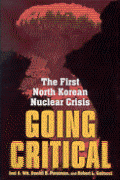
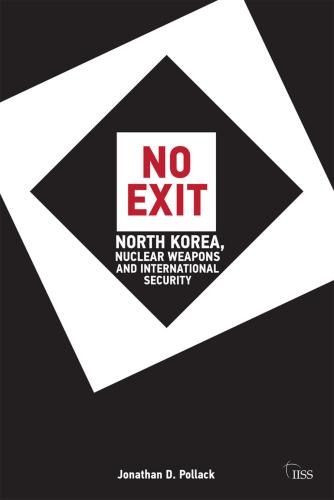
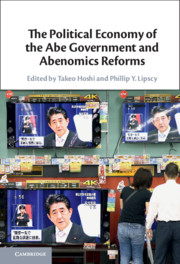
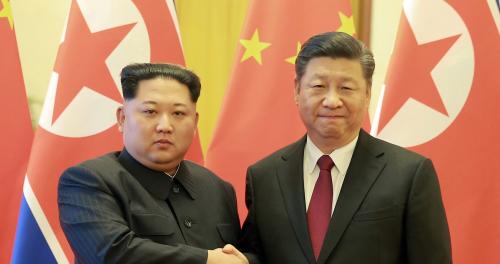
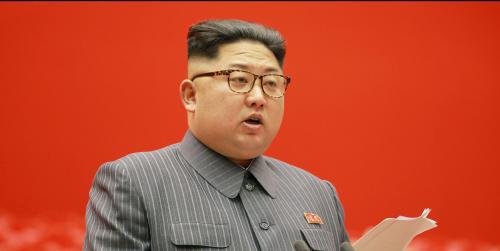
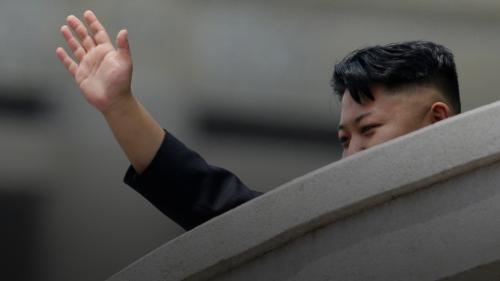

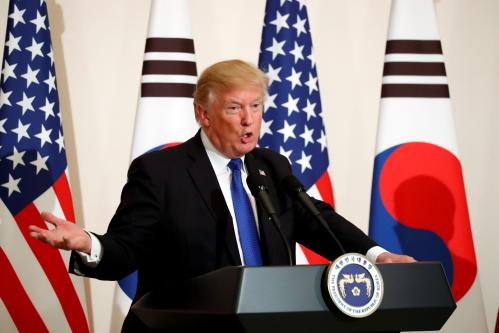
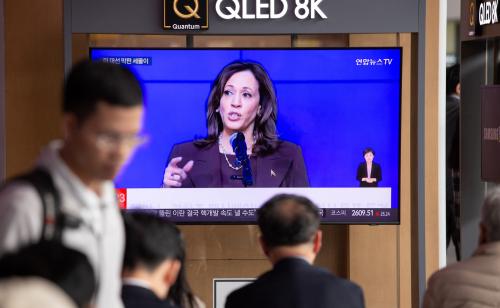

Commentary
Kim Jong-un has a maximum pressure and engagement strategy of his own
Why talk of a North-South peace treaty is more of the same
April 18, 2018